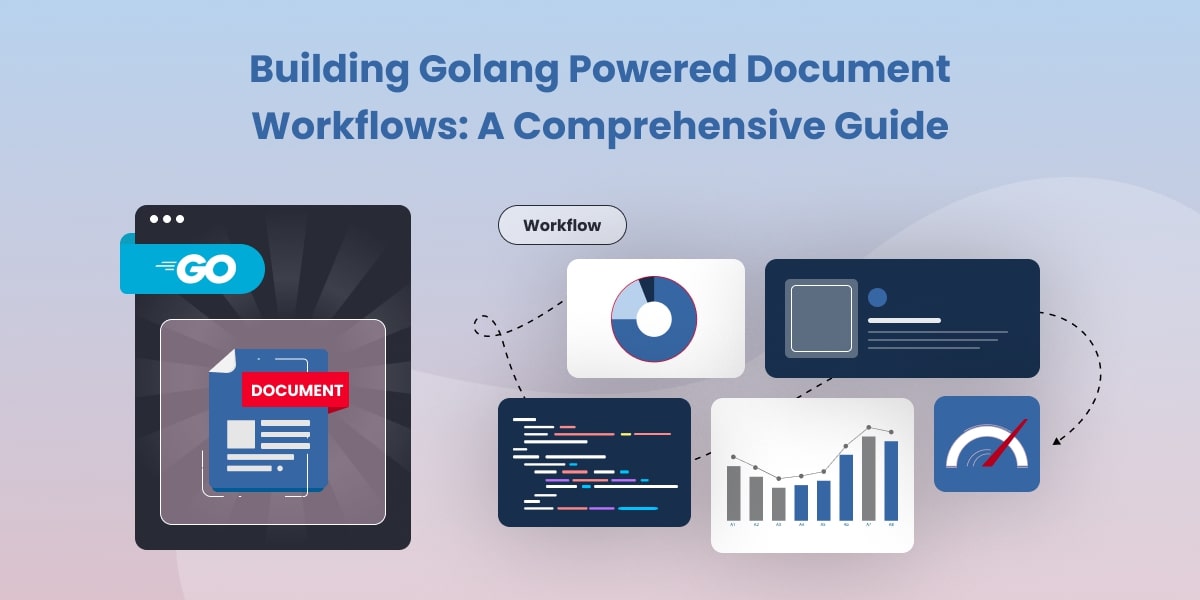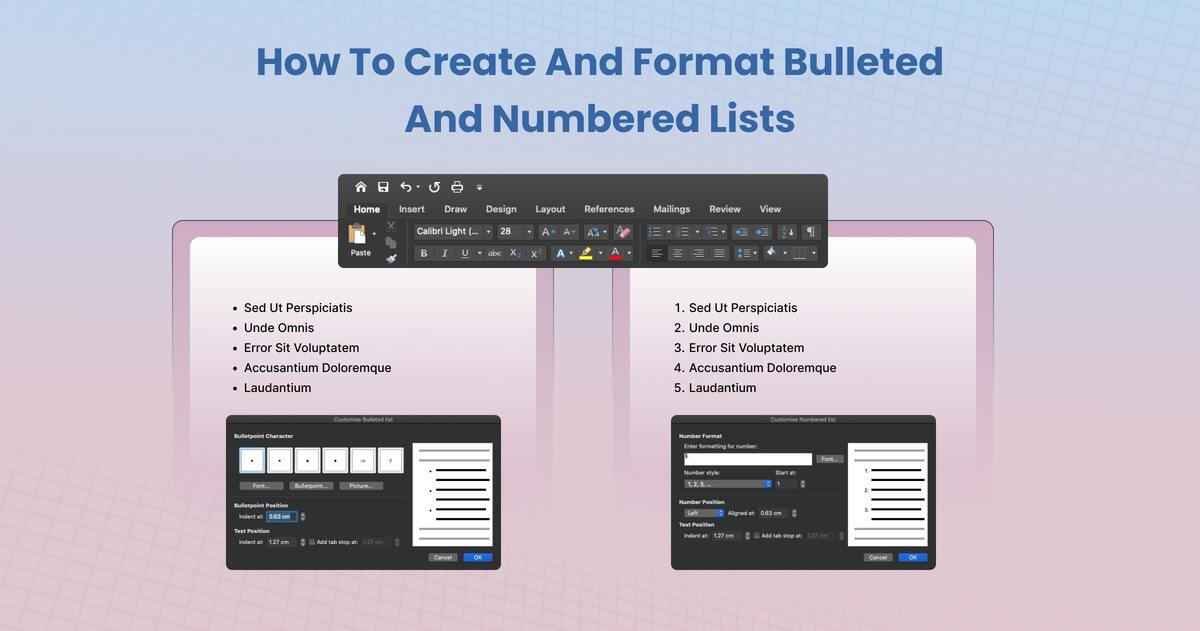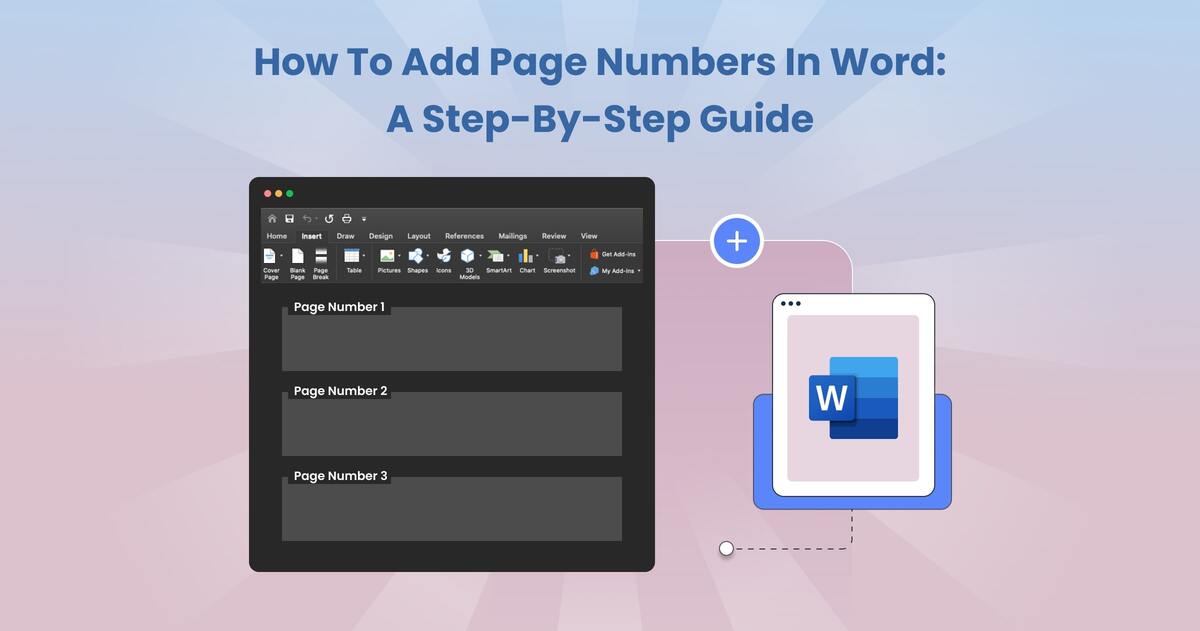Building Golang Powered Document Workflows: A Complete Guide
 In today’s fast-paced digital world, efficient document management is a cornerstone of productivity for businesses and individuals alike. Building Golang Powered document workflows can bring significant advantages, enabling automation, collaboration, and consistency.
In today’s fast-paced digital world, efficient document management is a cornerstone of productivity for businesses and individuals alike. Building Golang Powered document workflows can bring significant advantages, enabling automation, collaboration, and consistency.
In this comprehensive guide, we’ll explore the process of building Golang powered document workflows, delving into the benefits, key components, and best practices for creating robust and effective systems.
Understanding Document Workflows
A document workflow encompasses a series of steps and processes that are undertaken within an organization to create, edit, review, approve, store, and distribute documents. These workflows play a vital role in maintaining consistency, ensuring compliance, and facilitating collaboration among team members. However, traditional manual workflows can be time-consuming, prone to errors, and lack scalability.
The Power of Building Golang Powered Document Workflows
Golang (GO), is a programming language developed by Google. It’s known for its simplicity, performance, and efficiency. These qualities make Golang an excellent choice for building applications that require speed, reliability, and concurrency.
In the context of document workflows, Golang offers several advantages:
Concurrency: Golang’s built-in concurrency support allows for the efficient execution of multiple tasks concurrently, making it ideal for handling complex workflows.
Performance: Golang’s compiled nature results in fast execution times, ensuring that document workflows run smoothly and efficiently.
Ease of Use: Golang’s simple syntax and concise code make it accessible for developers of varying skill levels.
Extensive Libraries: Golang has a rich standard library and a growing ecosystem of third-party libraries that facilitate various tasks, from file manipulation to web services.
Components of Golang-Powered Document Workflows
Building a Golang-powered document workflow involves multiple components that collectively enable efficient document handling and processing. Here are the key components:
Document Creation and Generation
This component focuses on the creation of templates for programmatically generated documents. Golang is utilized to populate these templates with dynamic data, including client information, product details, and transaction history.
By leveraging Golang’s capabilities, developers can efficiently generate customized documents by merging static template structures with dynamic data inputs. This approach enables the automation of document generation processes, saving time and effort for businesses.
Document Conversion and Parsing
Golang-powered workflows have the capability to incorporate various features that enable the conversion of documents between different formats, such as converting DOCX files to PDF format. Additionally, these workflows can also facilitate the parsing of structured information from documents, allowing for the extraction of data from invoices and other similar documents.
Document Storage and Retrieval
Efficient storage and retrieval of documents are crucial for ensuring smooth workflows. Golang provides the capability to interface with various storage solutions, including databases, cloud storage, and file systems, enabling effective management of document storage and retrieval.
With Golang, you can connect to databases, such as MySQL or PostgreSQL, allowing you to store and retrieve documents efficiently. By leveraging the power of SQL queries, you can perform complex operations on your documents, such as filtering, sorting, and aggregating data.
Golang integrates with popular cloud storage solutions, such as Amazon S3 and Google Cloud Storage. These services offer scalable and reliable storage options for your documents. With Golang’s support, uploading, downloading, and managing documents stored in the cloud becomes straightforward, ensuring their accessibility and availability.
Furthermore, Golang allows you to interact with file systems directly. This means you can read from and write to files on your local machine or network drives. Whether it’s reading a document for processing or storing a new document, Golang provides the necessary tools to handle file operations efficiently.
Workflow Automation and Orchestration
The heart of the Golang-powered document workflow is automation. With support from both native and third-party libraries, Golang manages the process from document creation to approval, using logic and decision-making mechanisms to ensure each step is executed accurately and efficiently.
Benefits of Golang-Powered Document Workflows
Implementing document workflows using Golang can provide several benefits:
Efficiency: Golang’s performance and concurrency capabilities enable fast execution, reducing processing time and improving overall workflow efficiency.
Accuracy: By automating tasks, Golang minimizes the chances of manual errors that can occur in traditional workflows. This ensures precise handling of documents.
Consistency: Golang-powered workflows enforce standardized processes, ensuring that all documents follow the same template and adhere to organizational guidelines. This consistency promotes uniformity and reduces discrepancies.
Scalability: Golang’s ability to handle concurrent tasks makes it well-suited for workflows involving a high volume of documents and users. It can efficiently manage large-scale operations without compromising performance.
Customization: Golang empowers developers to customize workflows according to specific business needs. This flexibility allows for the accommodation of unique requirements and processes, making it easier to adapt the workflow to changing demands.
Overall, implementing document workflows using Golang offers improved efficiency, accuracy, consistency, scalability, and customization options, making it a valuable choice for organizations seeking to optimize their document management processes.
Building a Simple Golang-Powered Document Workflow
Setting Up the Golang Environment
Before building a Golang-powered document workflow, ensure that you have Golang installed on your system and a code editor for development.
Creating a Document Template
Start by creating a document template that serves as the basis for generated documents. Use libraries like UniOffice for Excel documents OR UniPDF for PDF documents.
Generating and Storing Documents
Utilize Golang to populate the document template with dynamic data and generate new documents. Store generated documents in a designated location, whether it’s a local directory or a cloud storage service.
Automating Workflow Steps
Implement logic in Golang to automate workflow steps. For instance, use Golang’s concurrency to generate multiple documents simultaneously, and employ decision-making mechanisms to route documents for review and approval.
Best Practices for Golang-Powered Document Workflows
Plan Thoroughly: Before implementation, map out the entire document workflow, identifying each step and decision point.
Modularize Code: Break down the workflow into modular components, making the codebase more maintainable and scalable.
Error Handling: Implement robust error handling to gracefully handle unexpected scenarios and prevent workflow disruptions.
Version Control: Utilize version control systems like Git to track changes to the workflow codebase and collaborate effectively.
Testing: Thoroughly test the workflow under various scenarios to ensure that it operates as intended and handles edge cases.
Future Trends in Document Workflow Automation
As technology evolves, the field of document workflow automation is likely to see the following trends:
Machine Learning Integration: AI and machine learning will play a significant role in automating decision-making processes within workflows.
Blockchain for Security: Blockchain technology will enhance the security and transparency of document workflows, ensuring data integrity and preventing unauthorized alterations.
Cloud-Native Workflows: Document workflows will increasingly be built using cloud-native architectures, enabling scalability and flexibility.
Conclusion
Building Golang powered document workflows offers a powerful approach to streamlining document management and ensuring efficient, accurate, and consistent handling of documents. By harnessing the capabilities of Golang, developers can automate processes, facilitate collaboration, and create a foundation for scalable and future-ready workflows. Whether it’s generating documents, parsing data, or orchestrating complex workflows, Golang’s performance and concurrency make it a valuable tool for optimizing document-related tasks.




